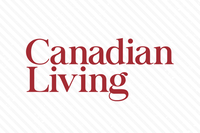
While just about every parenting technique is controversial, it's no secret that when it comes to sleep, infants should be placed on their backs. But this week, the Registered Nurses' Association of Ontario (RNAO) unveiled its safe sleep guidelines for new parents, based on a comprehensive review of evidence-based strategies. Entitled "Working With Families to Promote Safe Sleep for Infants 0-12 Months of Age," the report's findings align with previous research that suggests nurses and parents lay infants on their backs in a crib that meets Canadian safety standards. While cribs and bassinets may also be safe, it's important that the sides allow for airflow. As for larger beds, these aren't suitable for babies. In 2004, the Canadian Pediatric Society released recommendations against bed-sharing, which has been linked to unexpected infant death. As for inside the crib, the RNAO also identifies blankets, pillows, head coverings and soft toys as inappropriate since they can restrict breathing if blocking the infant's airways. What does a baby need in his or her crib? Only a firm mattress and fitted sheet, says the RNAO. These guidelines, when used in combination with breastfeeding and butting out those cigarettes, are believed to greatly reduce the risk of sudden infant death, says Elyse Maindonald, a nurse practitioner and lead expert on the review. What does this mean for parents who enjoy proximity to their newborns? The society recommends cosleeping (sleeping within arm's reach of your baby but on separate surfaces), at least for the first six months. Find the
full report here.
(Photo courtesy MorgueFile/dantada)

 While just about every parenting technique is controversial, it's no secret that when it comes to sleep, infants should be placed on their backs. But this week, the Registered Nurses' Association of Ontario (RNAO) unveiled its safe sleep guidelines for new parents, based on a comprehensive review of evidence-based strategies. Entitled "Working With Families to Promote Safe Sleep for Infants 0-12 Months of Age," the report's findings align with previous research that suggests nurses and parents lay infants on their backs in a crib that meets Canadian safety standards. While cribs and bassinets may also be safe, it's important that the sides allow for airflow. As for larger beds, these aren't suitable for babies. In 2004, the Canadian Pediatric Society released recommendations against bed-sharing, which has been linked to unexpected infant death. As for inside the crib, the RNAO also identifies blankets, pillows, head coverings and soft toys as inappropriate since they can restrict breathing if blocking the infant's airways. What does a baby need in his or her crib? Only a firm mattress and fitted sheet, says the RNAO. These guidelines, when used in combination with breastfeeding and butting out those cigarettes, are believed to greatly reduce the risk of sudden infant death, says Elyse Maindonald, a nurse practitioner and lead expert on the review. What does this mean for parents who enjoy proximity to their newborns? The society recommends cosleeping (sleeping within arm's reach of your baby but on separate surfaces), at least for the first six months. Find the
full report here.
(Photo courtesy MorgueFile/dantada)
While just about every parenting technique is controversial, it's no secret that when it comes to sleep, infants should be placed on their backs. But this week, the Registered Nurses' Association of Ontario (RNAO) unveiled its safe sleep guidelines for new parents, based on a comprehensive review of evidence-based strategies. Entitled "Working With Families to Promote Safe Sleep for Infants 0-12 Months of Age," the report's findings align with previous research that suggests nurses and parents lay infants on their backs in a crib that meets Canadian safety standards. While cribs and bassinets may also be safe, it's important that the sides allow for airflow. As for larger beds, these aren't suitable for babies. In 2004, the Canadian Pediatric Society released recommendations against bed-sharing, which has been linked to unexpected infant death. As for inside the crib, the RNAO also identifies blankets, pillows, head coverings and soft toys as inappropriate since they can restrict breathing if blocking the infant's airways. What does a baby need in his or her crib? Only a firm mattress and fitted sheet, says the RNAO. These guidelines, when used in combination with breastfeeding and butting out those cigarettes, are believed to greatly reduce the risk of sudden infant death, says Elyse Maindonald, a nurse practitioner and lead expert on the review. What does this mean for parents who enjoy proximity to their newborns? The society recommends cosleeping (sleeping within arm's reach of your baby but on separate surfaces), at least for the first six months. Find the
full report here.
(Photo courtesy MorgueFile/dantada)














Comments